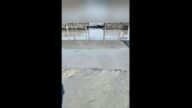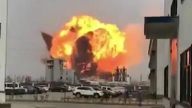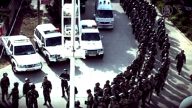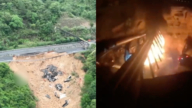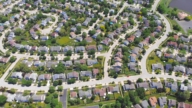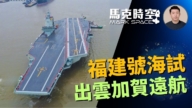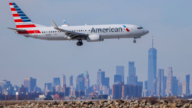【新唐人2011年2月25日讯】这一周来,北京大雾弥漫。大陆媒体也做了一些报导,但是这和民众的回馈、外国使馆的报告并不相符。大陆官方在监测空气品质时,有什么秘密呢?请看专家的解读。
北京市区近来出现阴霾天气,空气品质为中到重度污染。尤其是2月21号,官方公布的空气污染指数为333,媒体报导民众出行的能见度为一公里左右,总体空气品质为5级重度污染。
但是,从美国驻华使馆自己设立的空气检测站则显示,空气污染指数超过了最大值500,污染程度严重到用仪器都无法测出来了。而北京市民也反映21号的出行能见度只是10多米。
北京市民张女士:“这几天北京都是雾霾天气,像礼拜一、礼拜二那两天能见度也就是…10几米之前就看不见。反正就是雾濛濛的。他要是监测如果准确一点吧,差不多4-500。”
23号出版的《环球时报》报导,21号的北京因为大雾,空气污染达到五级“重度污染”,成为2011年首个重度污染天。而据《法新社》报导,美国驻北京大使馆当天的独立检测结果显示,21号北京的空气污染程度“超过了可检测的最差水准”。
近年来,中国肺癌、喉癌患者的人数不断上升。目前,肺癌已成为中国第一大癌症,占全国癌症患者总数的1/3。
旅德学者、工程专家王维洛认为,中共当局对空气监测时,并不是按照国际惯例,尤其是针对人体最有害的微粒检测方面。
王维洛: “中国最危险的就是最小的微粒是从汽车排气孔里排出来的,你吸到肺里面去以后或者你在喉管里面,特别容易生肺癌和喉癌。中国这个微粒(检测)
(政府)是不做的。人们不大知道这个危害,它也不公布这个东西。”
据了解,美国使馆的检测数据采用美国环保署的标准,也就是,监测直径小于 2.5微米的悬浮颗粒数量,而北京市环保局的监测对像为10微米以下的颗粒物。2010年11月,美国大使馆曾用“疯狂得糟糕”来形容北京的空气污染程度,后来因“用词不当”而删除。
《环球时报》报导说,从2008年初开始,美国使馆开始在使馆一大楼上建立空气监测站,并在“推特”网页上,每隔一小时更新有关数据。但美国使馆的数据常和北京官方发布的数据有出入。
新唐人记者 赵心知 周平 采访报导
==========
Heavy smog and fog shrouded Beijing last week.
Chinese media reports were quite different from
people’s feedback and foreign embassy reports.
So, are there secrets in the official air quality inspection?
Let’s hear what the experts have to say.
Heavy smog and fog have made Beijing’s air quality
poor and “hazardously” polluted.
On Feb. 21, the released air pollution index was 333.
Media reported that the visibility on the road was 1 km.
The overall air quality was level 5, “hazardous”.
The air quality examination by U.S. embassy in Beijing
showed the pollution index surpassing the max value 500.
Beijing residents also said the visibility on Feb. 21 was
slightly over 10 meters.
Beijing resident Ms. Zhang:
Beijing is filled with smog these days.
For several days, you couldn’t see things 10 meters away.
It’s all foggy. If they measured accurately,
it should be 400 to 500.”
The Feb 23 issue of Global Times reported, on Feb. 21,
due to the heavy fog, Beijing’s air pollution was Level 5
“Hazardous”. It was the 1st severely polluted day in 2011.
According to Radio France Internationale,
the U.S. embassy assessment found that the pollution level
was “beyond index” (i.e. below worse measurable rating).
The number of lung and throat cancer patients
has been increasing in China in recent years.
Lung cancer is the No. 1 cancer in China,
plaguing a third of all cancer patients in China.
Germany-based hydraulic engineer Wang Weiluo said,
when assessing the air quality,
the authorities don’t conform to international norms,
especially in measuring hazardous particles.
Wang: The most harmful particles are from vehicles.
They are likely to cause lung and throat cancers.
China does not monitor such particles.
People are unaware of their harmfulness.
The government does not reveal relevant information.
The U.S. embassy assesses by using the standards of
the U.S. Environmental Protection Agency,
to monitor particles smaller than 2.5 micron,
while Beijing monitors those smaller than 10 micron.
In Nov 2010, it called Beijing’s air quality “crazy bad”.
They later deleted the word for “incorrect” usage.
Global Times reported that since the start of 2008,
the U.S. Embassy has been building an air quality
assessment facility on its buildings.
It provides hourly updates on pollution on Twitter,
which is usually different from China’s official data.
NTD reporters Zhao Xinzhi and Zhou Ping




